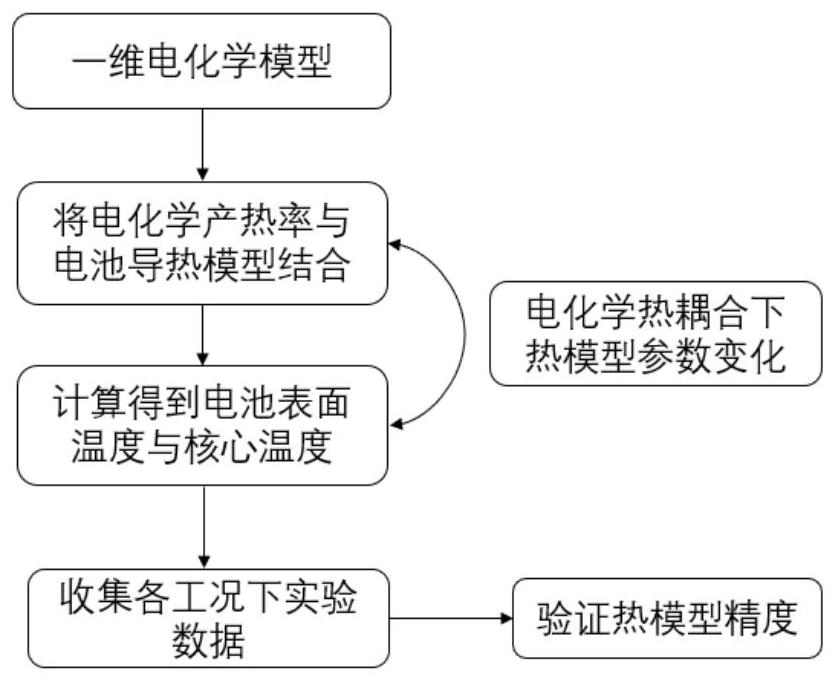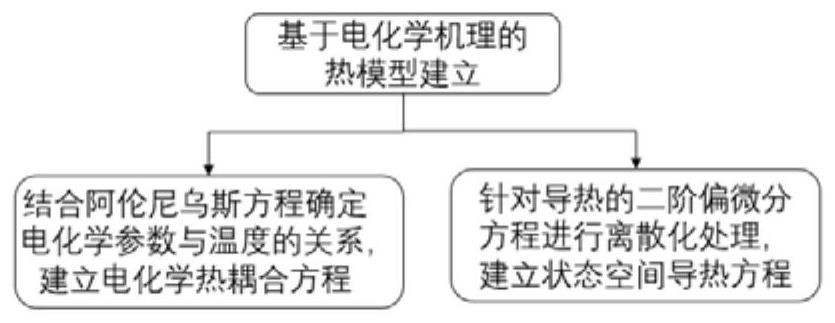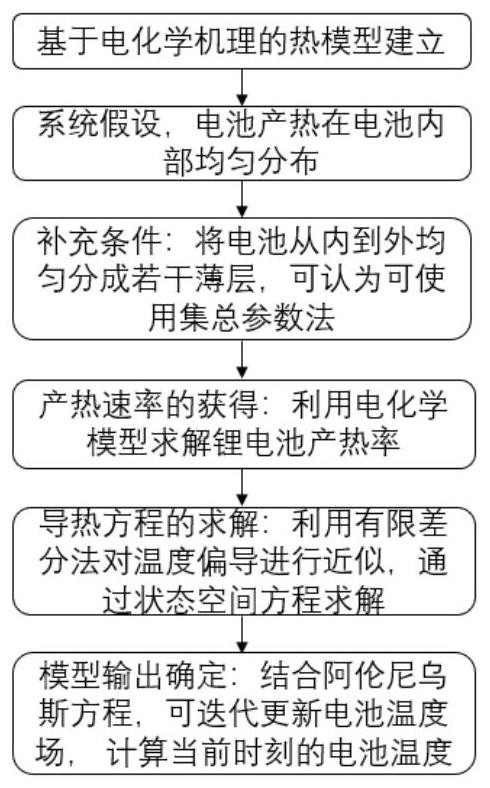Power lithium battery thermal model building method and system based on electrochemical mechanism
A method of establishing a lithium battery technology, applied in complex mathematical operations, computer-aided design, design optimization/simulation, etc., can solve problems such as thermal models are too simple, complex models, and the internal temperature distribution of batteries cannot be obtained more accurately, to achieve The effect of reducing the amount of calculation, ensuring the accuracy of the model, and improving reliability and safety
- Summary
- Abstract
- Description
- Claims
- Application Information
AI Technical Summary
Problems solved by technology
Method used
Image
Examples
Embodiment Construction
[0105] The present invention will be described in detail below in conjunction with specific embodiments. The following examples will help those skilled in the art to further understand the present invention, but do not limit the present invention in any form. It should be noted that those skilled in the art can make several changes and improvements without departing from the concept of the present invention. These all belong to the protection scope of the present invention.
[0106] The embodiment of the present invention provides a method for building a power lithium battery thermal model based on an electrochemical mechanism, referring to figure 1 and figure 2 As shown, the specific steps of the method are as follows:
[0107] Step S1: Discretize the second-order partial differential heat conduction equation of the lithium-ion battery based on the finite difference method, and establish a thermal model of the lithium battery; specifically,
[0108] Based on the finite d...
PUM
 Login to View More
Login to View More Abstract
Description
Claims
Application Information
 Login to View More
Login to View More - R&D
- Intellectual Property
- Life Sciences
- Materials
- Tech Scout
- Unparalleled Data Quality
- Higher Quality Content
- 60% Fewer Hallucinations
Browse by: Latest US Patents, China's latest patents, Technical Efficacy Thesaurus, Application Domain, Technology Topic, Popular Technical Reports.
© 2025 PatSnap. All rights reserved.Legal|Privacy policy|Modern Slavery Act Transparency Statement|Sitemap|About US| Contact US: help@patsnap.com



